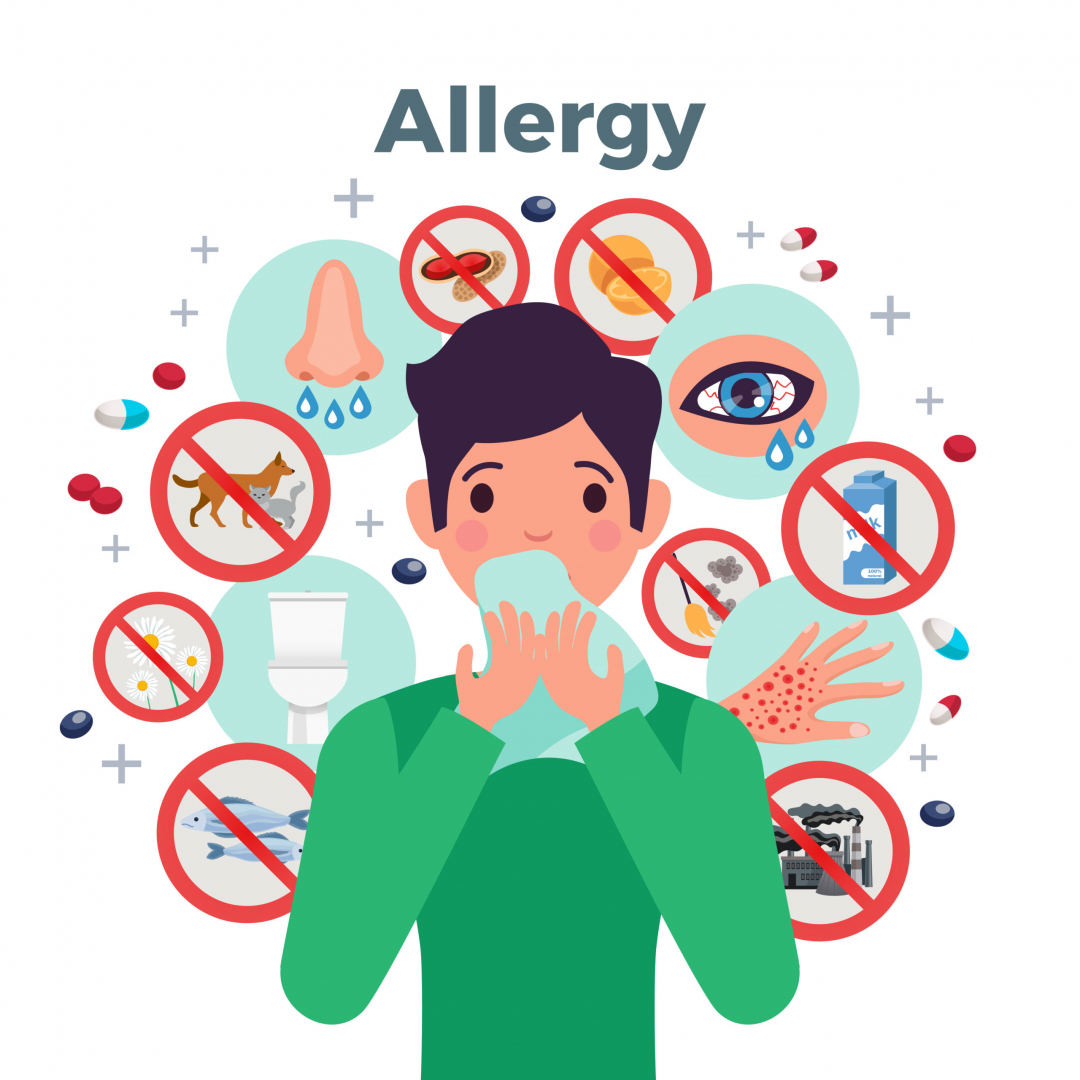Allergies: Understanding the Types, Causes, Diagnosis, and Treatment Options

Introduction
Allergies are a common phenomenon that affects millions of people worldwide, leading to a range of symptoms that can vary from mild discomfort to severe reactions. In this comprehensive article, we delve deep into the world of allergies, exploring the different types, underlying causes, methods of diagnosis, and available treatment options to help individuals navigate this often sneaky and misunderstood immune response.
Types of Allergies
Allergies manifest in various forms, each triggered by different allergens that the immune system mistakenly identifies as threats. Some common types of allergies include:
Food Allergies: These allergies occur when the immune system reacts to certain proteins in foods, such as peanuts, tree nuts, dairy, eggs, wheat, soy, and shellfish.
Seasonal Allergies (Hay Fever): Also known as allergic rhinitis, these allergies are typically triggered by airborne allergens like pollen, leading to symptoms such as sneezing, itchy eyes, and nasal congestion.
Pet Allergies: Cat and dog dander, as well as proteins found in their saliva and urine, can trigger allergic reactions in susceptible individuals.
Insect Sting Allergies: Bee stings, wasp stings, and other insect venom can cause severe allergic reactions in some people, leading to symptoms ranging from mild swelling to life-threatening anaphylaxis.
Latex Allergy: Allergic reactions to latex, commonly found in medical gloves, condoms, and other rubber products, can manifest as skin rashes and respiratory symptoms.
Drug Allergies: Certain medications can trigger allergic reactions in some individuals, leading to symptoms such as skin rashes, itching, and, in severe cases, anaphylaxis.
Dust Allergies: Dust mites, microscopic organisms commonly found in household dust, can provoke allergic reactions characterized by sneezing, coughing, and respiratory distress.
Causes of Allergies
Allergic reactions occur when the immune system mistakenly identifies harmless substances, known as allergens, as potential threats. The immune system then launches a response by producing Immunoglobulin E (IgE) antibodies, which bind to mast cells in various tissues throughout the body. Upon re-exposure to the allergen, these IgE-mast cell complexes release histamine and other chemical mediators, triggering the classic symptoms of an allergic reaction, such as itching, swelling, and inflammation.
Genetics play a significant role in predisposing individuals to allergies, as a family history of allergies increases the likelihood of developing allergic conditions. Environmental factors, including exposure to allergens at an early age, pollution, and lifestyle choices, can also influence the development and severity of allergies.
Diagnosis of Allergies
Diagnosing allergies involves a combination of medical history assessment, physical examination, and specific tests to identify the allergen triggers. Common methods used for allergy diagnosis include:
Skin Prick Tests: Small amounts of allergens are introduced to the skin through pricking or scratching, and the appearance of a localized reaction indicates sensitivity to that particular allergen.
Blood Tests: Blood tests measure the levels of IgE antibodies specific to various allergens, helping identify the triggers responsible for allergic reactions.
Patch Testing: Patch tests involve applying small amounts of allergens to the skin under occlusion to detect delayed hypersensitivity reactions, commonly seen in contact dermatitis.
Elimination Diets: By removing specific foods from the diet and gradually reintroducing them, healthcare providers can identify food allergies based on symptomatic responses.
Treatment of Allergies
Managing allergies involves a combination of allergen avoidance, pharmacological treatments, and in some cases, immunotherapy to desensitize the immune system. Common treatment options for allergies include:
Antihistamines: These medications block the effects of histamine, reducing symptoms like itching, sneezing, and hives associated with allergic reactions.
Nasal Steroids: Intranasal corticosteroids reduce inflammation in the nasal passages, alleviating symptoms of allergic rhinitis such as nasal congestion and sneezing.
Decongestants: These medications help relieve nasal congestion by constricting blood vessels in the nasal passages, providing temporary relief from allergy symptoms.
Allergy Shots (Immunotherapy): Immunotherapy involves gradual exposure to increasing doses of allergens to build tolerance and reduce the immune system’s reactivity to specific triggers.
Avoidance Strategies: For allergens like pollen, dust mites, pet dander, and certain foods, avoiding exposure is often the best strategy to prevent allergic reactions.
Conclusion
Allergies are a prevalent immune response that can significantly impact individuals’ quality of life, ranging from mild nuisance to severe allergic reactions requiring immediate medical attention. Understanding the types, causes, diagnosis, and treatment options for allergies is crucial for effectively managing these conditions and reducing the frequency and severity of allergic reactions.
By working closely with healthcare providers, individuals can develop personalized allergy management plans that address their specific needs and preferences. With advances in allergy testing and treatment, many individuals can lead healthy and active lives while effectively managing their allergic conditions. Remember, you are not alone—in a world where allergens abound, knowledge and proactive management are your allies in the battle against allergies.

